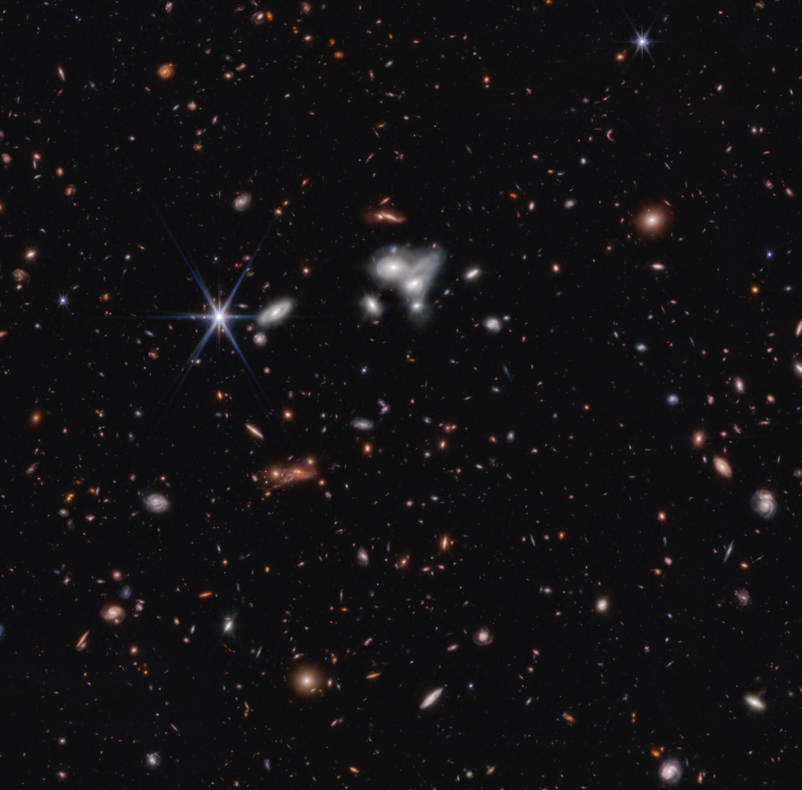
Webb Detects Most Distant Active Supermassive Black Hole to Date
06 Jul 2023 Researchers have discovered the most distant active supermassive black hole to date with the James Webb Space Telescope. The galaxy, CEERS 1019, existed just over 570 million years after the big bang, and its black hole is less massive than any other yet identified in the early universe.
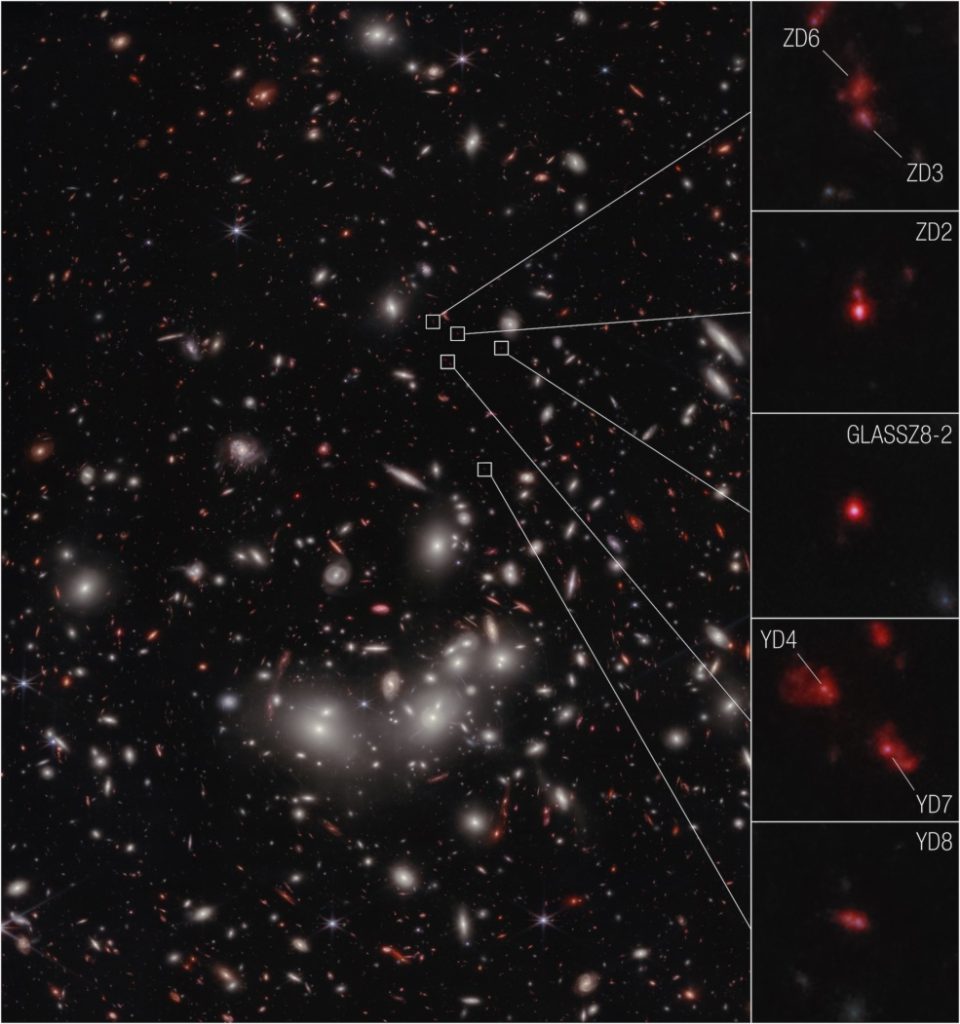
Webb Reveals Early-Universe Prequel to Huge Galaxy Cluster
24 Apr 2023 NASAs James Webb Space Telescope has confirmed, for the first time, a protocluster of seven galaxies at a distance that astronomers refer to as redshift 7.9, or a mere 650 million years after the big bang.
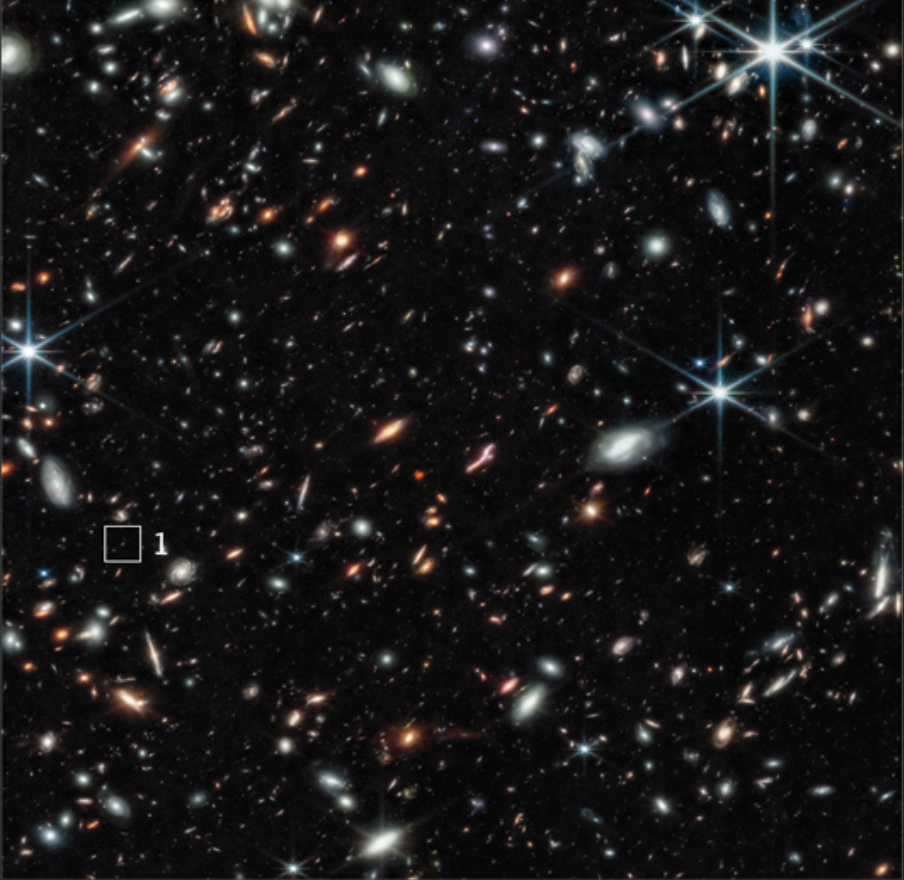
NASA’s Webb Draws Back Curtain on Universe’s Early Galaxies
17 Nov 2022 A few days after officially starting science operations, NASA’s James Webb Space Telescope propelled astronomers into a realm of early galaxies, previously hidden beyond the grasp of all other telescopes until now.
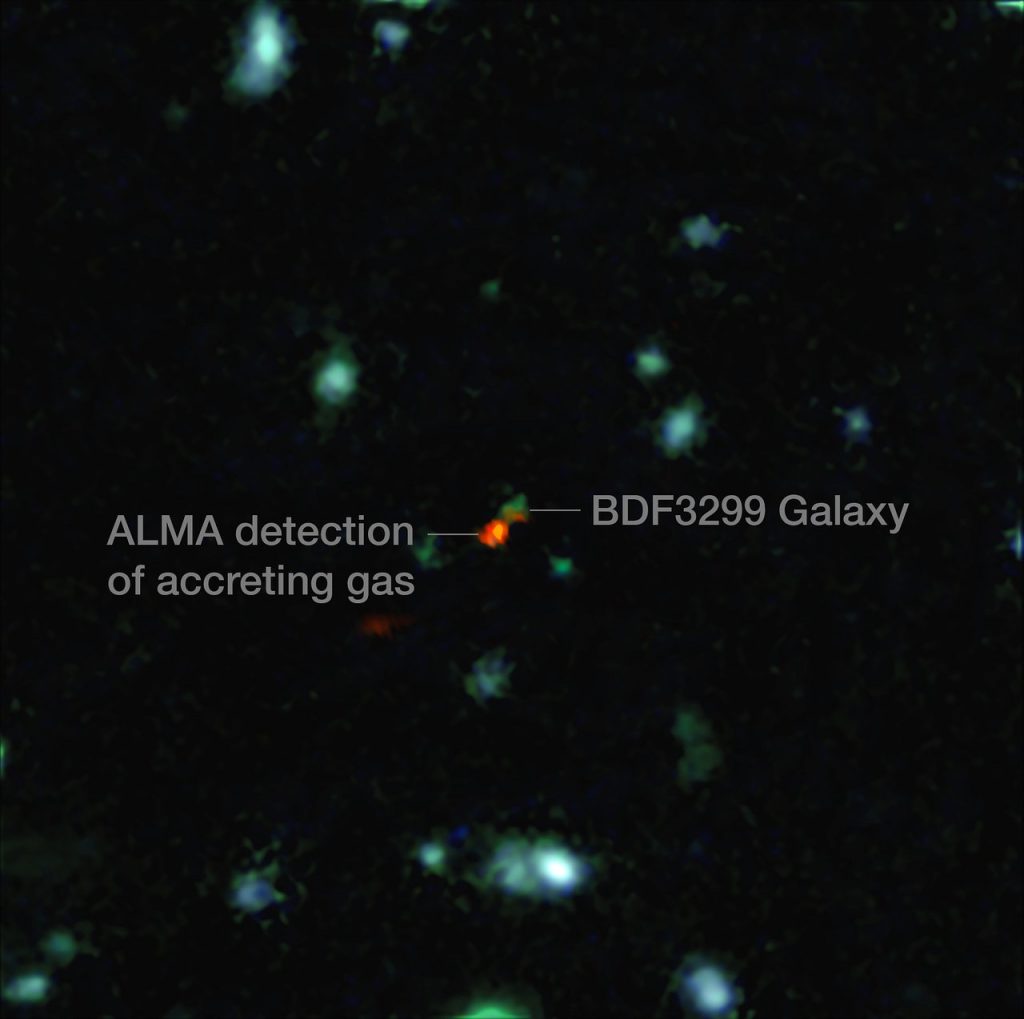
ALMA Witnesses Assembly of Galaxies in the Early Universe for the First Time
22 July 2015 The Atacama Large Millimeter/submillimeter Array (ALMA) has been used to detect the most distant clouds of star-forming gas yet found in normal galaxies in the early Universe. The new observations allow astronomers to start to see how the first galaxies were built up and how they cleared the cosmic fog during the era of reionisation. This is the first time that such galaxies are seen as more than just faint blobs.
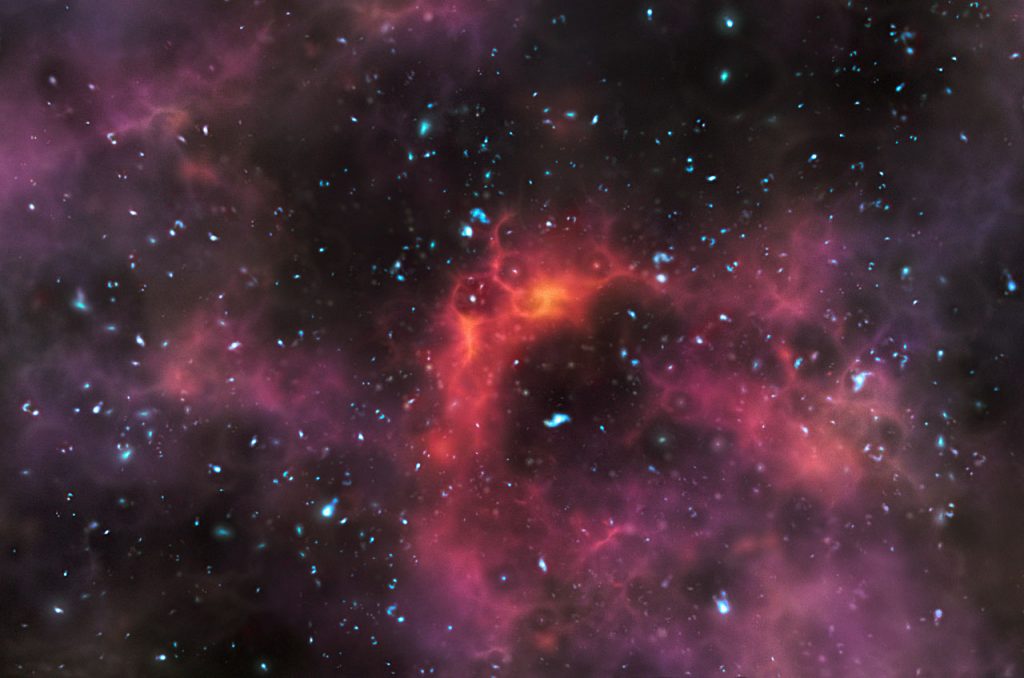
Distant Galaxies Reveal The Clearing of the Cosmic Fog
12 October 2011 Scientists have used ESO’s Very Large Telescope to probe the early Universe at several different times as it was becoming transparent to ultraviolet light. This brief but dramatic phase in cosmic history — known as reionisation — occurred around 13 billion years ago. By carefully studying some of the most distant galaxies ever detected, the team has been able to establish a timeline for reionisation for the first time. They have also demonstrated that this phase must have happened quicker than astronomers previously thought.
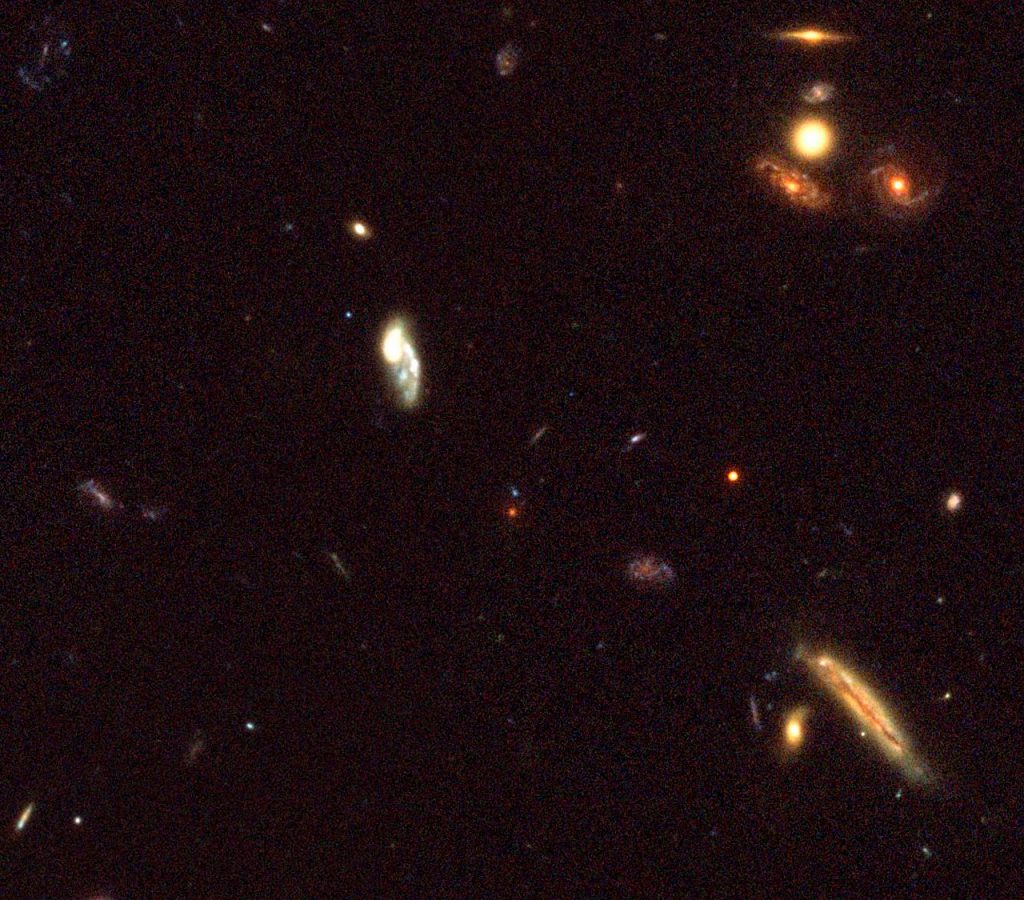
Old Galaxies in the Young Universe
7 July 2004 Using the multi-mode FORS2 instrument on the Very Large Telescope at Paranal, a team of Italian astronomers [2] have identified four remote galaxies, several times more massive than the Milky Way galaxy, or as massive as the heaviest galaxies in the present-day universe. Those galaxies must have formed when the Universe was only about 2,000 million years old, that is some 12,000 million years ago. The newly discovered objects may be members of a population of old massive galaxies undetected until now.
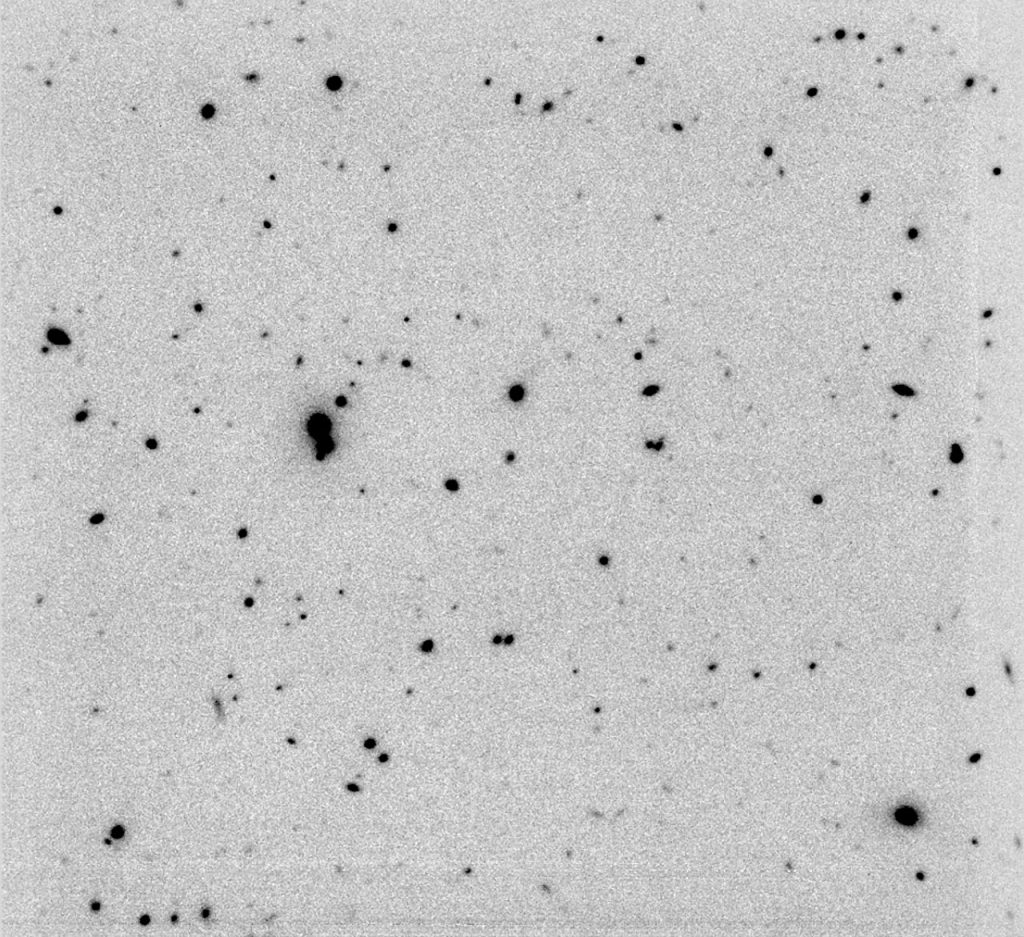
Into the Epoch of Galaxy Formation
17 February 2000 Working with the ESO Very Large Telescope (VLT) at the Paranal Observatory, a group of European astronomers [1]has just obtained one of the deepest looks into the distant Universe ever made by an optical telescope. These observations were carried out in the near-infrared spectral region and are part of an attempt to locate very distant galaxies that have so far escaped detection in the visual bands. The first results are very promising and some concentrations of galaxies at very large distances were uncovered.
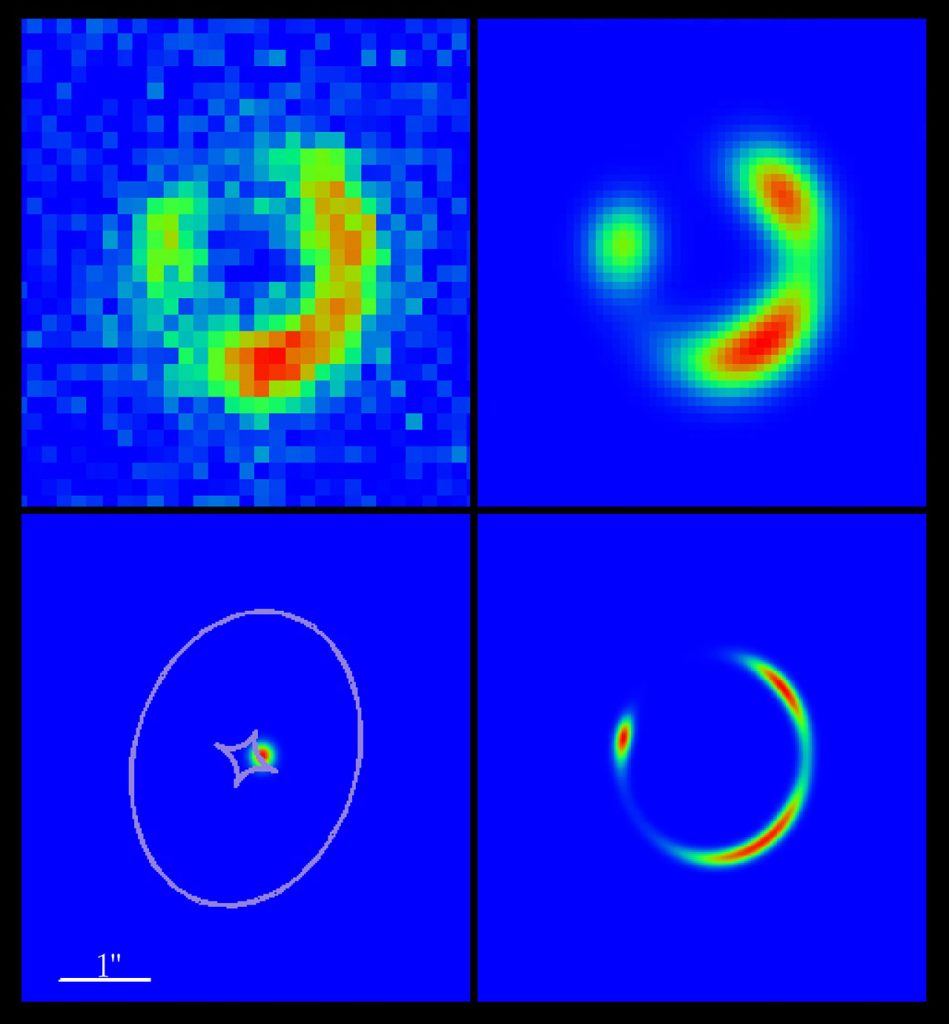
First Results from the UT1 Science Verification Programme
26 November 1998 Performance verification is a step which has regularly been employed in space missions to assess and qualify the scientific capabilities of an instrument. Within this framework, it was the goal of the Science Verification program to submit the VLT Unit Telescope No. 1 (UT1) to the scrutiny that can only be achieved in an actual attempt to produce scientifically valuable results. To this end, an attractive and diversified set of observations were planned in advance to be executed at the VLT.
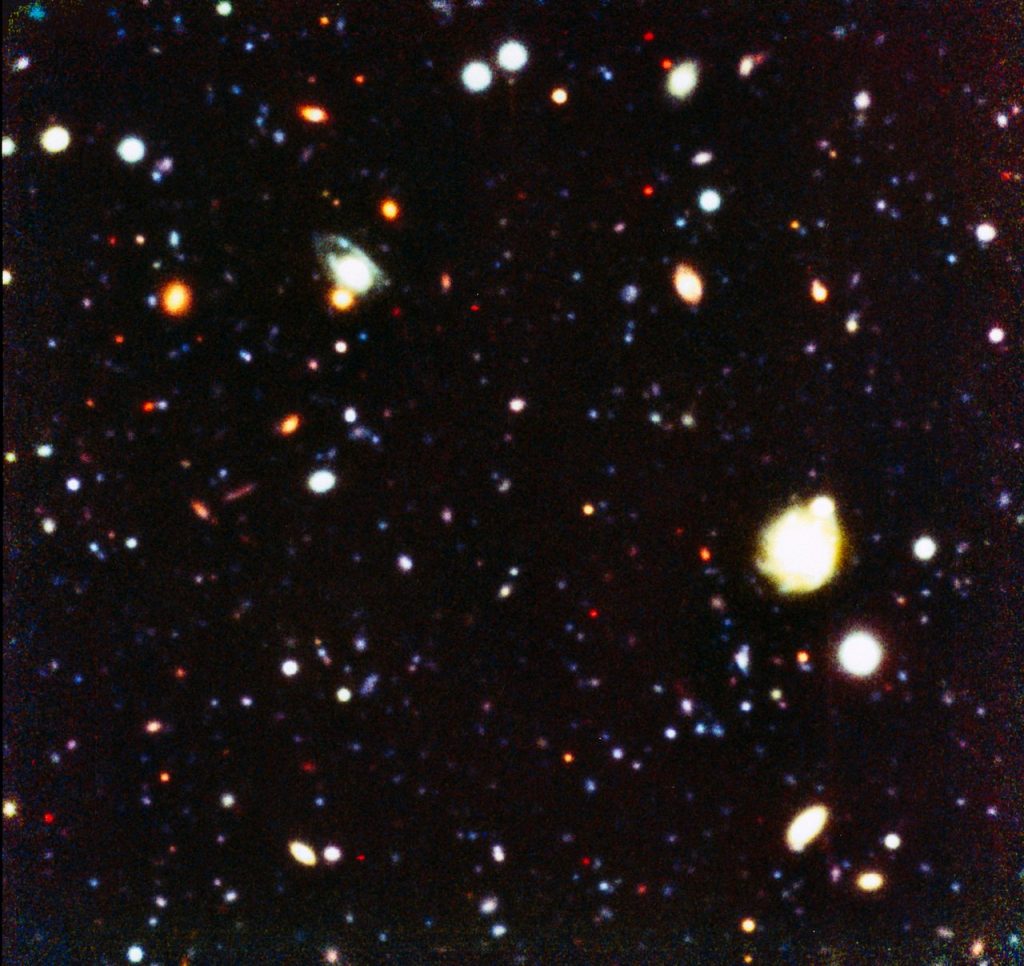
Deep Sky Diving with the ESO New Technology Telescope
13 January 1998 Within a few months, the first 8.2-meter Unit Telescope of the ESO Very Large Telescope (VLT) array will open its eye towards the sky above the Atacama desert. As documented by recent Press Photos from ESO, the construction work at the Paranal VLT Observatory is proceeding rapidly. Virtually all of the telescope components, including the giant Zerodur mirror, are now on the mountain.
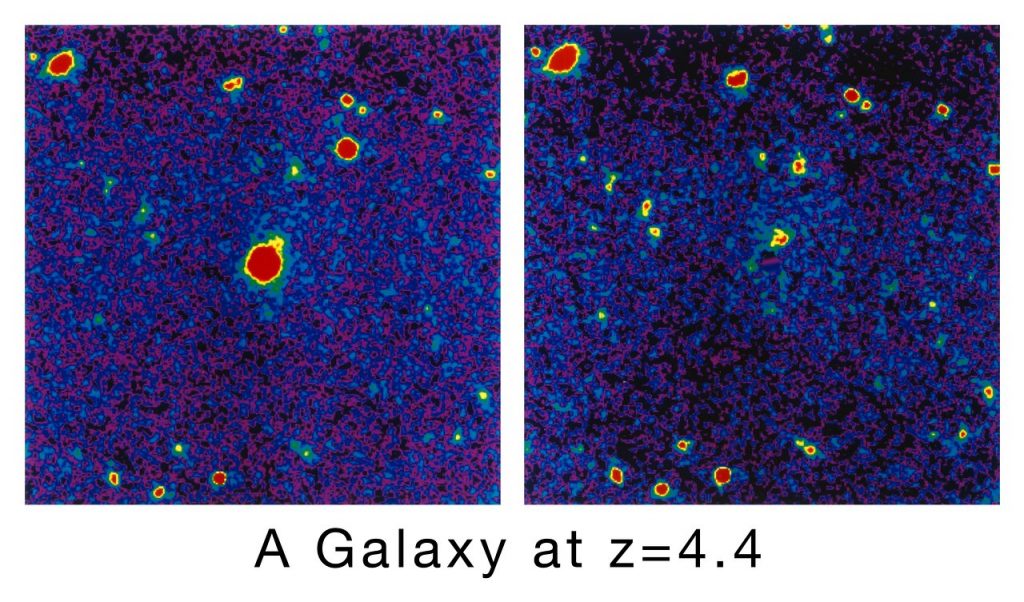
ESO Astronomers Detect a Galaxy at the Edge of the Universe
15 September 1995 Four European astronomers have taken advantage of the superb imaging quality of the ESO 3.5-metre New Technology Telescope (NTT) at the La Silla observatory, to detect a galaxy at an extremely large distance. They conclude that its redshift is z = 4.4; thus, this galaxy is by far the most remote ever detected.
